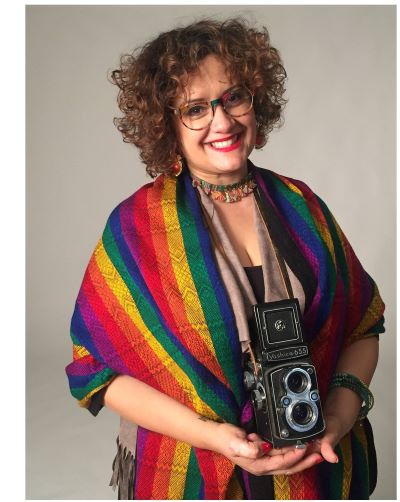
Sept. 15 through Oct. 15 is Hispanic Heritage Month. The campus newsletter staff invited a May 2021 University of Maryland Eastern Shore graduate to share her thoughts on the meaning of this cultural diversity celebration.
By Angélica Maria Garcia
When I hear ‘Hispanic Heritage Month,’ I tend to cringe a little. There are so many opinions about this topic within the Hispanic/Latino communities and beyond. Many feel it is impossible to capture the true richness of our many diverse cultures within one title, and for many, the term ‘Hispanic’ is the issue.
I once heard a speaker at a Latino conference say: “I am Latino. Maybe someday I will accept being called Hispanic.”
This stuck with me because he was referring to his identity and indigenous roots, and the Spaniards’ colonization of the Americas. ‘Hispanic’ is mostly used to acknowledge Spanish speakers or people from Spain, but the misconception is that all Latin Americans speak Spanish, which is not the case in Brazil, where Portuguese is the language.
Never mind the dialects indigenous peoples of Mexico, Central and South America speak. If you look up the definition of ‘Hispanic,’ it usually says, “relating to Spain or to Spanish-speaking countries, especially those of Latin America.” I understand it is easy to group us into one category and call it a national appreciation month, like a Hallmark holiday, but even then, the awkwardness of it landing in the middle of September to the middle October is strange.

I am a first-generation American born to a Mexican father and a mother from El Salvador. My parents met in Los Angeles in the 60s and I was born there. I have roots in three countries and I am a mixture of all three-I can’t fully claim either one. This is what it’s like to be a Salva-Mex-American.
I truly appreciate my parents struggle and hard work to get to this country – and for me, they are the ones I celebrate daily because without them paving the way for my siblings and me, we would not have the privileges we have today. I am the first in my immediate family to earn a college degree and I am currently enrolled at the Institute of American Indian Arts in Santa Fe, New Mexico, where I am pursuing a Master of Fine Arts in Studio Arts.
Attending UMES for my undergraduate education was intentional. At the time, I was living on the Eastern Shore of Virginia, where I worked as a missioner, and served immigrants and migrant farmworkers. It was a not-so-easy place for someone with brown skin to arrive from another country. I was incredibly lucky to be raised in a part of the country where diversity is everywhere. Growing up in Los Angeles and moving to the Eastern Shore helped me realize how important it is to support non-white peoples because I was able to see how their voices were often silenced.
I wanted to attend and support a non-white university and sought an experience that would help me learn beyond the classroom. Why? Because being a person of color is in fact a different experience than for someone with light skin. The more we educate ourselves about people’s lived experiences, histories, realities, identities, languages and cultures, the wiser we become and the better we can help others.
I honor all Black, Indigenous, and people of color who came before me and paved the way for those of us trying to contribute not just to this country, but to humanity on a global level. This is why I enrolled in an HBCU and now attend a tribal college. Education about different people, histories and cultures matters. There is no excuse to group everyone in the same category when we have the opportunity to learn or to ask.
My story is the story of Mexico and Central America, but it’s here. It has nothing to do with Spain. I view Hispanic Heritage Month as an opportunity to have a conversation about my culture and identity as a Latina – even if the title and awkward date make me shake my head.
At least we are being recognized and appreciated and that’s a good start.
Editor’s note: Views and opinions expressed in this essay are those of the author and do not necessarily reflect the policies or positions of the University of Maryland Eastern Shore. Any content provided by authors are their opinion, and are not intended to malign any religious or ethnic group, club, organization, company or individual.

